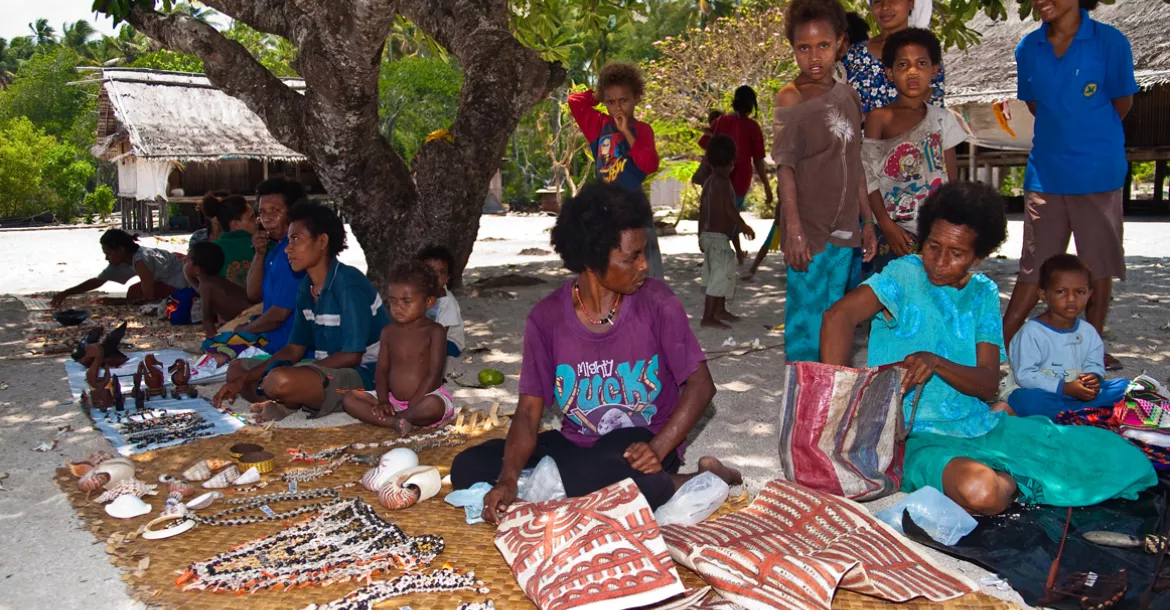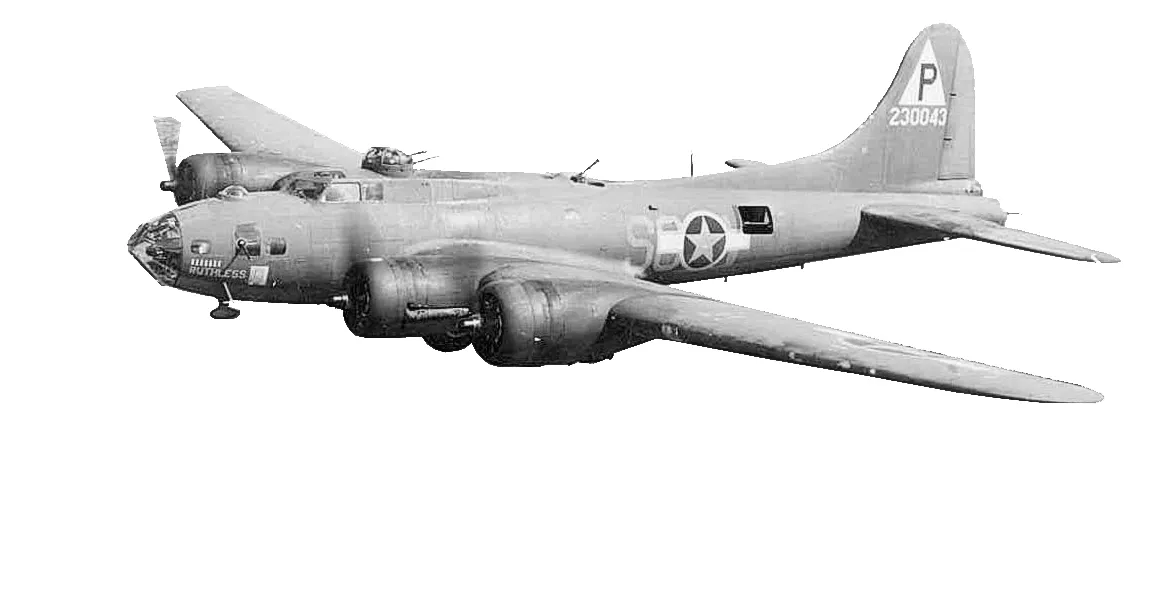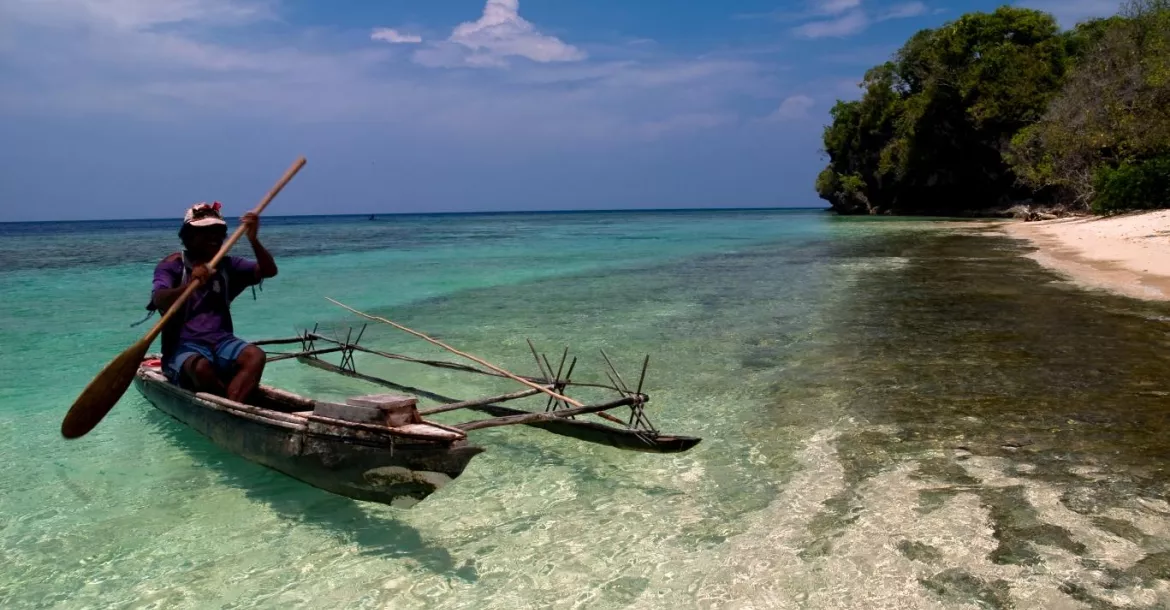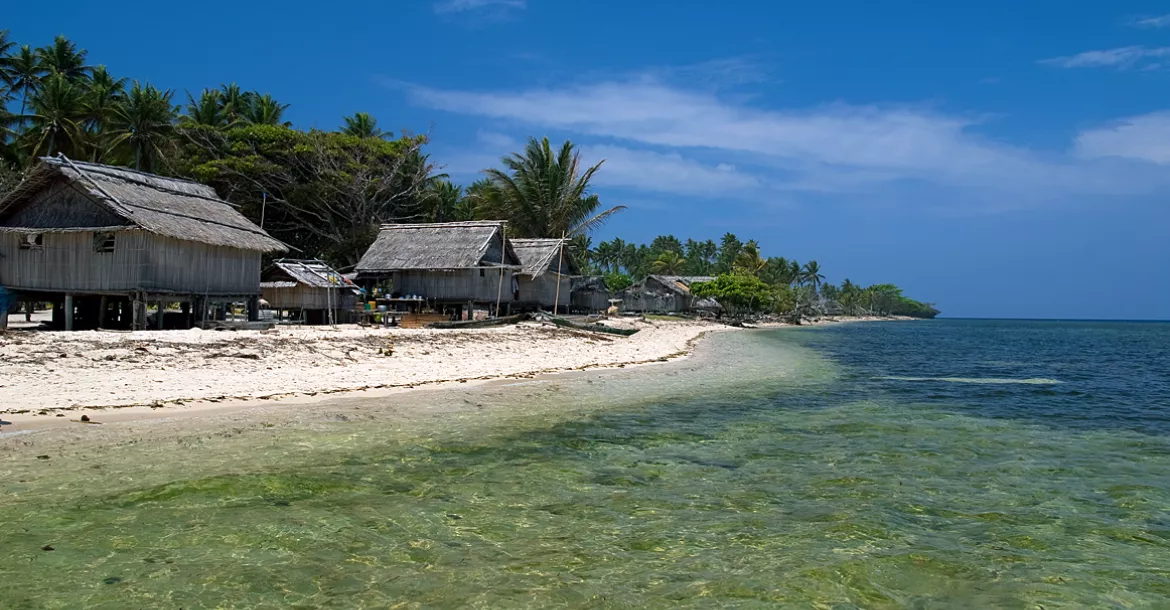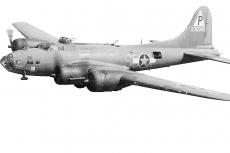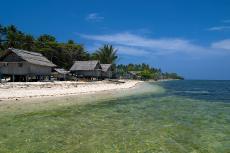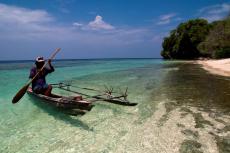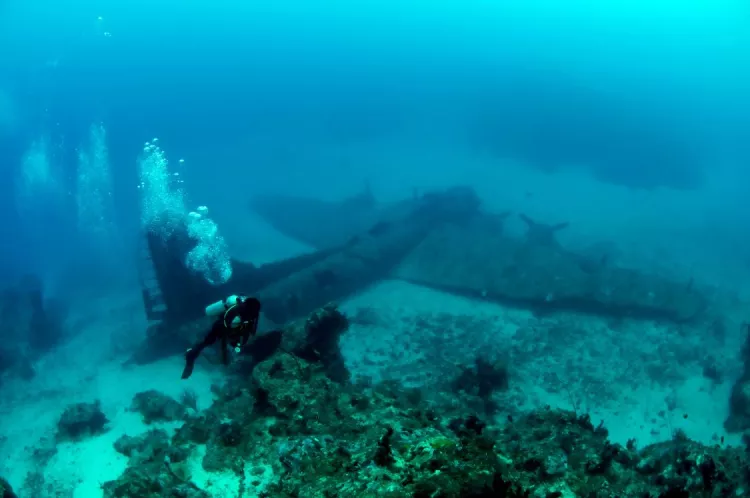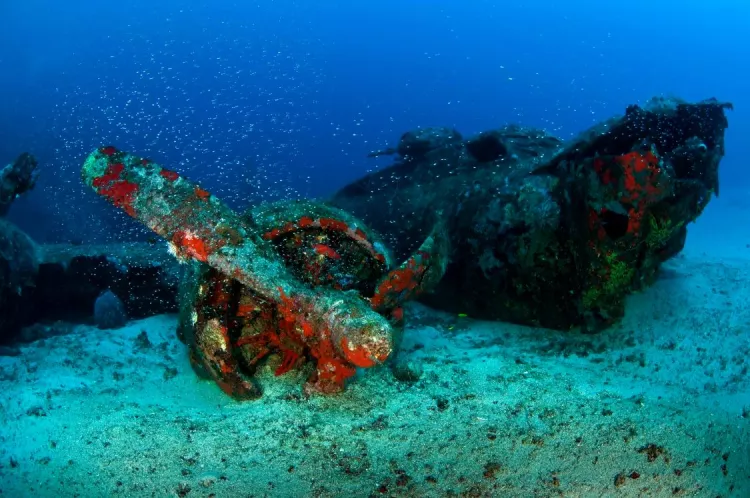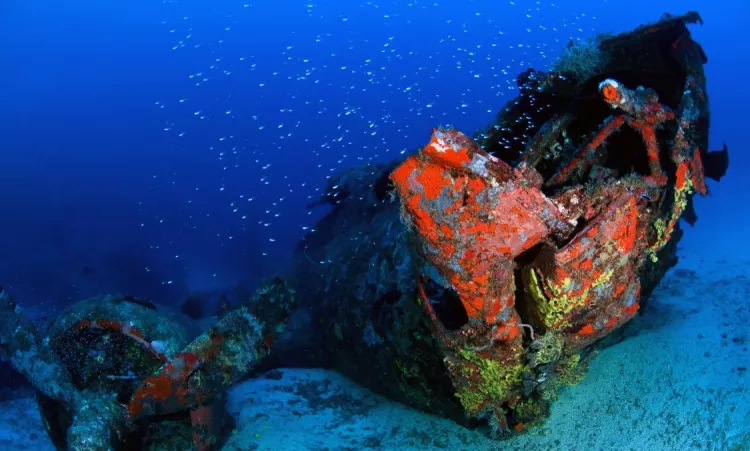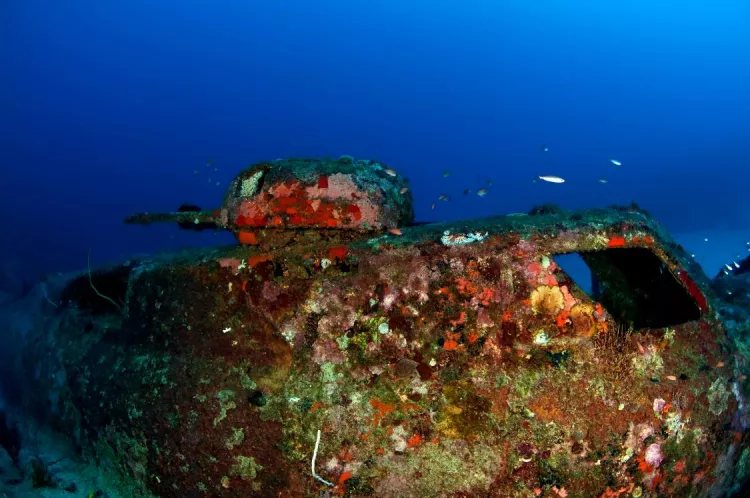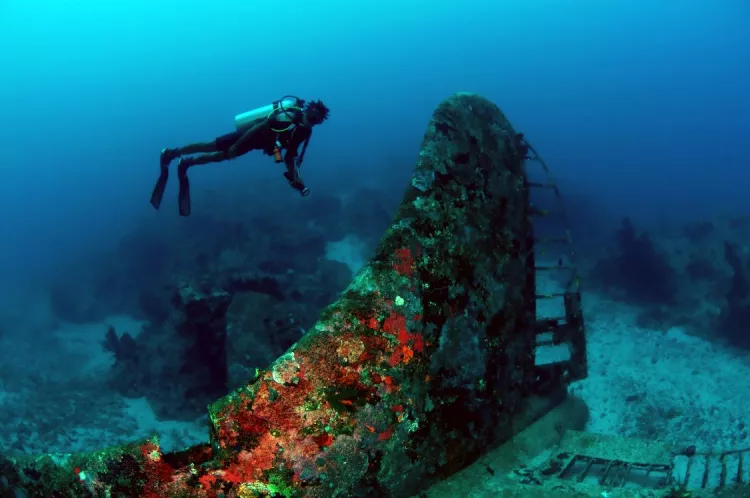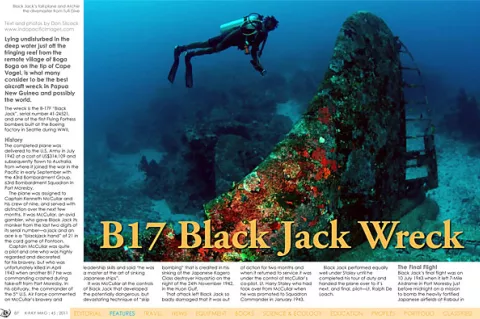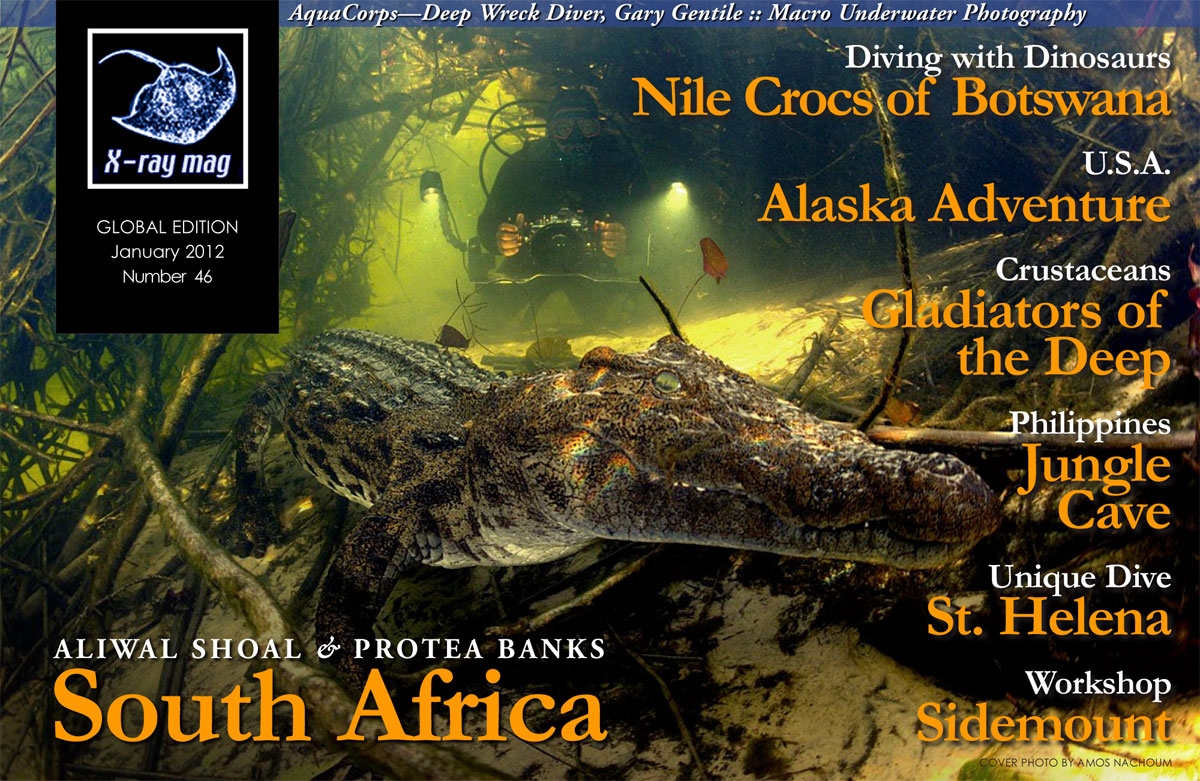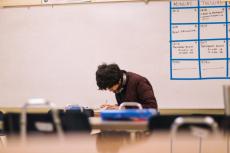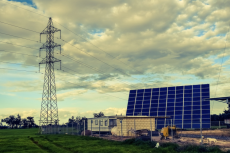Lying undisturbed in the deep water just off the fringing reef from the remote village of Boga Boga on the tip of Cape Vogel, is what many consider to be the best aircraft wreck in Papua New Guinea and possibly the world.
Contributed by
The wreck is the B-17F “Black Jack”, serial number 41-24521, and one of the first Flying Fortress bombers built at the Boeing factory in Seattle during WWII.
History
The completed plane was delivered to the U.S. Army in July 1942 at a cost of US$314,109 and subsequently flown to Australia, from where it joined the war in the Pacific in early September with the 43rd Bombardment Group, 63rd Bombardment Squadron in Port Moresby.
The plane was assigned to Captain Kenneth McCullar and his crew of nine, and served with distinction over the next few months. It was McCullar, an avid gambler, who gave Black Jack its moniker from the last two digits of its serial number—a jack and an ace is a “blackjack hand” of 21 in the card game of Pontoon.
Captain McCullar was quite a pilot and one who was highly regarded and decorated for his bravery, but who was unfortunately killed in April 1943 when another B17 he was commanding crashed during take-off from Port Moresby. In his obituary, the commander of the 5th U.S. Air Force commented on McCullar’s bravery and leadership skills and said “he was a master at the art of sinking Japanese ships”.
It was McCullar at the controls of Black Jack that developed the potentially dangerous, but devastating technique of “skip bombing” that is credited in his sinking of the Japanese Kagero Class destroyer Hayashio on the night of the 24th November 1942, in the Huon Gulf.
That attack left Black Jack so badly damaged that it was out of action for two months and when it returned to service it was under the control of McCullar’s co-pilot, Lt. Harry Staley who had took over from McCullar when he was promoted to Squadron Commander in January 1943.
Black Jack performed equally well under Staley until he completed his tour of duty and handed the plane over to its next, and final, pilot—Lt. Ralph De Loach.
The Final Flight
Black Jack’s final flight was on 10 July 1943 when it left 7-Mile Airdrome in Port Moresby just before midnight on a mission to bomb the heavily fortified Japanese airfields at Rabaul in New Britain.
The plane’s course took it southeast down the coast before it turned northeast over the Owen Stanley Range and Dyke Ackland Bay to the Solomon Sea and on to New Britain. On reaching Kimbe Bay on the northern coast, it changed course again and headed east to Rabaul.
The flight was a troubled one, with both right wing engines developing problems during the flight to New Britain. However, De Loach, together with his crew of nine, managed to reach Rabaul and successfully deliver their bombs on target.
De Loach turned the plane round to return to Port Moresby, but on the way back ran into a violent storm on approach to the coast of New Guinea to the northwest of Cape Nelson, a situation he later described the situation as “the blackest of black nights…the worst flying weather I’d ever seen in my life”.
With two engines badly malfunctioning, it was impossible to hold the plane on course for Port Moresby and cross the Owen Stanley’s, and so Black Jack was turned southeast down the coast towards Milne Bay. They made it as far as Cape Vogel where, with virtually no fuel left, the decision was taken to ditch the plane on the shallow reef that runs parallel to the white sand beach at Boga Boga.
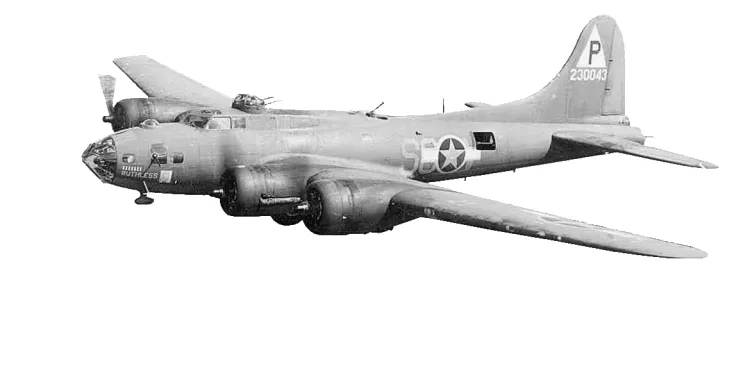
Never having ditched a bomber before, De Loach handed the controls over to his co-pilot, Joseph Moore, who managed to put the plane down but over-shot the reef flat. It ended up over the deep water, where the plane floated briefly before sinking down to the sandy sea bed some 50m below.
There was just enough time for the ten-men crew, three of whom had been injured in the landing, to get out before Black Jack sank, and they managed to get to shore with the aid of local villagers who had seen the plane come down.
An Australian Coastwatcher named Eric Foster also saw the crash landing and informed air-sea rescue to dispatch an RAAF seaplane to evacuate the wounded. The rest of the crew were rescued two days later when a PT boat arrived to take them to Goodenough Island, where they were flown back to Port Moresby, and then given two weeks' leave in Sydney before returning to full combat duty.
The pilot De Loach, and co-pilot Moore were subsequently awarded Silver Star medals, with some other members of the crew receiving the Bronze Star or Oak Leaf Cluster for their parts in the overall mission and getting the plane down.
Black Jack, on the other hand, lay largely forgotten on the sea floor and remained undisturbed there for another 43 years.
Discovery
The discovery of Black Jack reads like something out of an adventure novel, with three Australians—Rod Pierce, Bruce Johnson and David Pennefather—stumbling on the wreck almost by accident in late December 1986. Pennefather, an ex-Kiap who spent most of his adult life in PNG and developed a strong interest in WWII wrecks, had visited the Cape Vogel area earlier in 1986 where he heard from the villagers of Bogo Boga that a plane had crashed near their reef in WWII. He subsequently organized a Christmas dive trip with Rod Pierce and Bruce Johnson to try and find what they believed to be was an Australian Beaufort A9.
Rod Pierce is the owner of the MV Barbarian, a small liveaboard dive boat that is synonymous with wreck diving in Papua New Guinea, and Bruce Johnson was a commercial pilot. The villagers of Boga Boga guided the three divers to the general location where the plane had gone down, and when they entered the water, the game plan was to spread out and cover as much area as possible to try and find it.
It was Rod Pearce who found the wreck first, spotting the large tail-plane as he conducted his search. One can only imagine the sheer exhilaration he must have felt when he first saw the B17 Flying Fortress sitting there on the sand in almost perfect condition!
For someone who has dedicated his life to wreck diving, it must have been like finding the Holy Grail.
Over the next few days, they dived the wreck as much as its depth of nearly 50m would allow, entering the inside of the plane and finding the Radio Call Plate with the 24521 serial number on it, which later allowed them to positively identify it as the famous Black Jack. Bruce Johnson also managed to satisfy his intense desire to reach the cockpit, which meant finding his way through the dark bomb bay and many dangling control cables, to become the first person in over 40 years to sit in the pilot’s chair.
Black Jack documentary
So unique was the discovery of Black Jack that it led to a documentary being made the following year by a team of nine Australian divers and underwater cameramen together with Rod Pierce, Bruce Johnson and David Pennefather. Making a documentary about a plane wreck in a remote location in 50m of water is a significant undertaking and required eight months of detailed planning, major logistic support from Rod Pearce on MV Barbarian and two teams of divers for eight days to get the footage.
Australian aviation writer, Steve Birdsall, provided a very interesting aspect to the film, when he managed to locate Ralph De Loach in Marina del Rey, California, USA. De Loach had completed his service at the end of WWII and returned to civilian life where he went on to become one of the famous Marlboro Men—the advertising icons created by the tobacco company Phillip Morris to sell their Marlboro cigarettes.
Birdsall arranged for the 69-year-old De Loach to return to Cape Vogel where he was reunited with some of the villagers who had helped get him and his crew safely to shore when Black Jack was ditched in 1943. The completed film, Black Jack’s Last Mission, was very successful and was shown on television around the world and is still available on DVD.
Diving the Black Jack
The really special thing about the Black Jack is the fact that the plane is so intact and sitting as she is, on a sandy seabed in clear blue waters with visibility that can easily reach 40+, it’s almost like diving a set from a Hollywood movie. The nose is badly crumpled from the impact of the crash landing and the propellers on the four engines are somewhat twisted, but the rest of the plane is basically all there, which is quite remarkable after over 66 years underwater.
Apparently, the plane sank within 45 seconds of coming to a halt, and the crew only just had time to scramble out with the three wounded members. This meant that, apart from two waist guns and the radio transmitters which were jettisoned prior to ditching, Black Jack took all its contents with it to the seafloor. Pierce, Johnson and Pennefather found machine guns still in their turrets with hundreds of rounds of ammunition in the tracks to the guns and the twin tail guns could still be moved freely in their mounts.
The other very significant thing about the Black Jack is that at nearly 50m depth, she is at the very limits of recreational diving, and although it’s a straightforward dive in as much as the water is clear and there are no major hazards or obstructions outside of the plane, decompression and bottom time are critical to a safe overall experience. Two divers are reported to have lost their lives diving Black Jack since it was discovered in 1986, so it has to be said that this is a dive only for the experienced and competent.
There is a permanent guideline from the shallow reef, which leads divers down the slope, and at around 15m, divers will be able to see the wreck below. There is usually a fairly strong current that sweeps along the slope, so the line is good for guiding divers and providing a reference point—particularly so on the way back. The line goes all the way down quite close to the huge tail of the wreck, and from there, one should head to the front of the plane to take in its full size. Entry into the plane is possible, but given the depth of the wreck, the extreme likelihood of nitrogen narcosis and all the potential hazards inside, only the most foolish would even consider doing that—just don’t go there.
A much safer option is to look inside the cockpit, as the windows are open.
The current is usually strongest out in front of the plane and swimming against it will increase one’s air consumption even more, so take great caution with air supply and retain half a tank for the ascent and inevitable deco stop on the rope.
Operators
● Tufi Dive Resort (www.tufidive.com): It is a about a two-hour trip across Collingwood Bay from Cape Nelson to Boga Boga, and one will need good weather to do it, but Tufi Dive does the Black Jack regularly on special request. I dived Black Jack with Tufi Dive, and both Glenn and Archie, the dive leaders at the resort, know the wreck well and how to dive it safely.
● Rod Pearce (www.niuginidiving.com) includes Black Jack on his wreck diving specials on his boat MV Barbarian, so divers can combine diving the wreck with meeting one of the men who discovered it!
● Craig de Wit on Golden Dawn (www.mvgoldendawn.com) includes Black Jack as part of the Milne Bay itinerary, which the boat does at certain times of the year. I first dove Black Jack from Golden Dawn back in about 2001, and de Wit also knows the wreck well and how to dive it safely.

